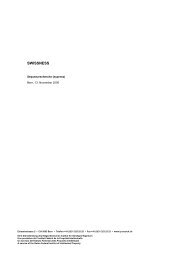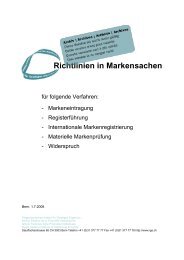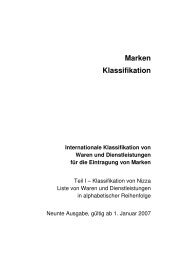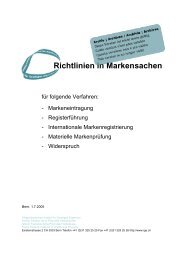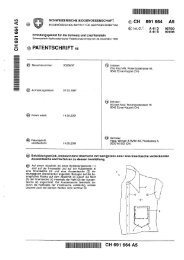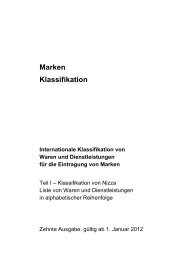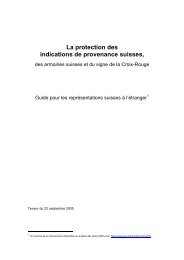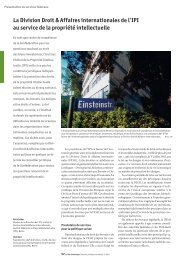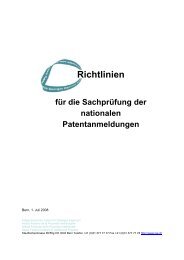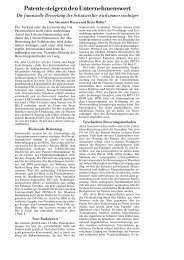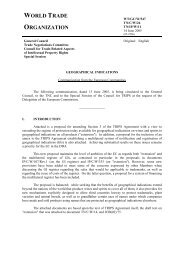AVIS DE DROIT PROTECTION DES SIGNES NATIONAUX
AVIS DE DROIT PROTECTION DES SIGNES NATIONAUX
AVIS DE DROIT PROTECTION DES SIGNES NATIONAUX
Create successful ePaper yourself
Turn your PDF publications into a flip-book with our unique Google optimized e-Paper software.
ETATS-UNIS<br />
Example: A company advertises its product, which was invented in Seattle and manufactured<br />
in Bangladesh, as "Created in USA." This claim is deceptive because consumers are likely to<br />
interpret the term "Created" as Made in USA — an unqualified U.S. origin claim.<br />
Example: A computer imported from Korea is packaged in the U.S. in an American-made<br />
corrugated paperboard box containing only domestic materials and domestically produced<br />
expanded rigid polystyrene plastic packing. Stating Made in USA on the package would<br />
deceive consumers about the origin of the product inside. But the company could legitimately<br />
make a qualified claim, such as "Computer Made in Korea — Packaging Made in USA."<br />
Example: The Acme Camera Company assembles its cameras in the U.S. The camera lenses<br />
are manufactured in the U.S., but most of the remaining parts are imported. A magazine ad for<br />
the camera is headlined "Beware of Imported Imitations" and states "Other high-end camera<br />
makers use imported parts made with cheap foreign labor. But at Acme Camera, we want<br />
only the highest quality parts for our cameras and we believe in employing American<br />
workers. That’s why we make all of our lenses right here in the U.S." This ad is likely to<br />
convey that more than a specific product part (the lens) is of U.S. origin. The marketer should<br />
be prepared to substantiate the broader U.S. origin claim conveyed to consumers viewing the<br />
ad.<br />
Assembled in USA<br />
A product that includes foreign components may be called "Assembled in USA" without<br />
qualification when its principal assembly takes place in the U.S. and the assembly is<br />
substantial. For the "assembly" claim to be valid, the product’s last "substantial<br />
transformation" also should have occurred in the U.S. That’s why a "screwdriver"<br />
assembly in the U.S. of foreign components into a final product at the end of the<br />
manufacturing process doesn’t usually qualify for the "Assembled in USA" claim.<br />
Example: A lawn mower, composed of all domestic parts except for the cable sheathing,<br />
flywheel, wheel rims and air filter (15 to 20 percent foreign content) is assembled in the U.S.<br />
An "Assembled in USA" claim is appropriate.<br />
Example: All the major components of a computer, including the motherboard and hard drive,<br />
are imported. The computer’s components then are put together in a simple "screwdriver"<br />
operation in the U.S., are not substantially transformed under the Customs Standard, and must<br />
be marked with a foreign country of origin. An "Assembled in U.S." claim without further<br />
qualification is deceptive.<br />
222



